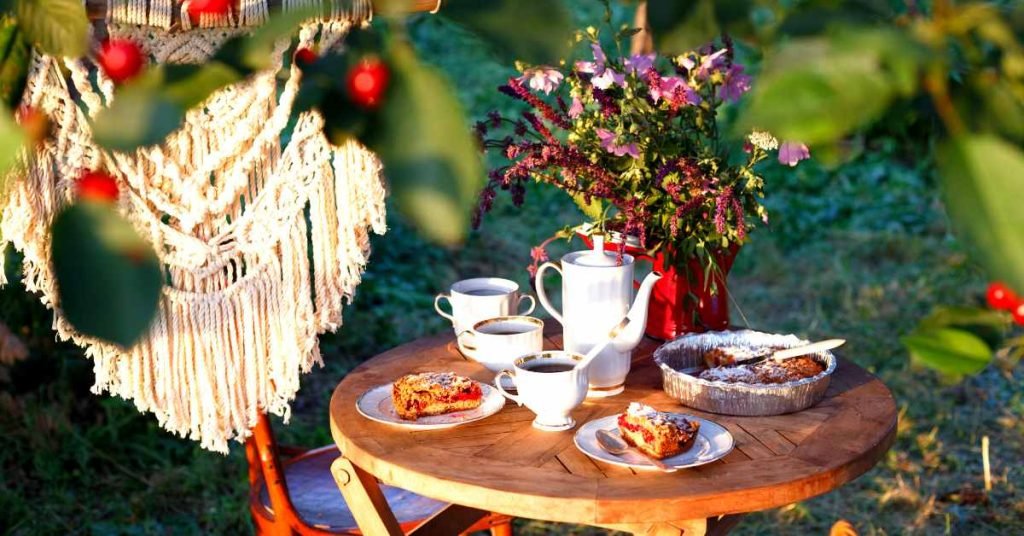English tea and scones – a classic combination that has been steeped in tradition for centuries.
As the mellow aroma of freshly brewed tea wafts through cozy tearooms and elegant drawing rooms, and the warm, buttery scent of scones fills the air, one cannot help but be transported into a world where time seems to slow down, and every sip and bite is a celebration of British culture.
In this article, we embark on a delightful journey into the heart of English tea and scone traditions, exploring their origins, the art of afternoon tea, and the quirky customs that make this experience a quintessential part of British life.
The Origins of Tea in England
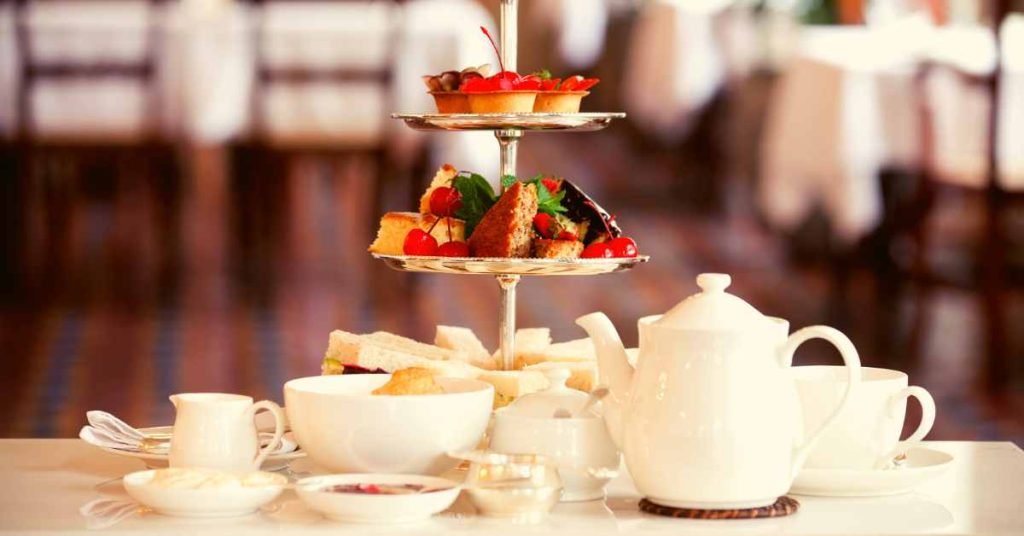
Tea, that comforting elixir, found its way to England in the 17th century, thanks to Catherine of Braganza, the Portuguese wife of Charles II.
As a tea enthusiast herself, Catherine introduced the beverage to the English court, and it quickly gained popularity among the aristocracy.
Initially considered a luxury, tea became more accessible over time, and by the 18th century, it had become a staple in households across the country.
The Afternoon Tea Tradition
The tradition of afternoon tea, as we know it today, owes its existence to Anna, the Duchess of Bedford.
In the early 1840s, Anna found herself feeling a bit peckish in the late afternoon, with the long gap between lunch and dinner leaving her yearning for a little something to tide her over.
This led her to adopt the habit of enjoying a light meal accompanied by tea and treats, and she began inviting friends to join her. The trend quickly caught on, and soon, afternoon tea became a fashionable social ritual among the upper class.
The formalization of afternoon tea is credited to Queen Victoria’s friend, Anna Maria Stanhope, the Duchess of Bedford.
The Duchess introduced the idea of serving sandwiches, cakes, and, of course, scones during the afternoon tea, turning it into a more substantial and structured affair.
This refined afternoon tradition soon became a symbol of elegance and sophistication.
Scones: The Crown Jewel of Afternoon Tea
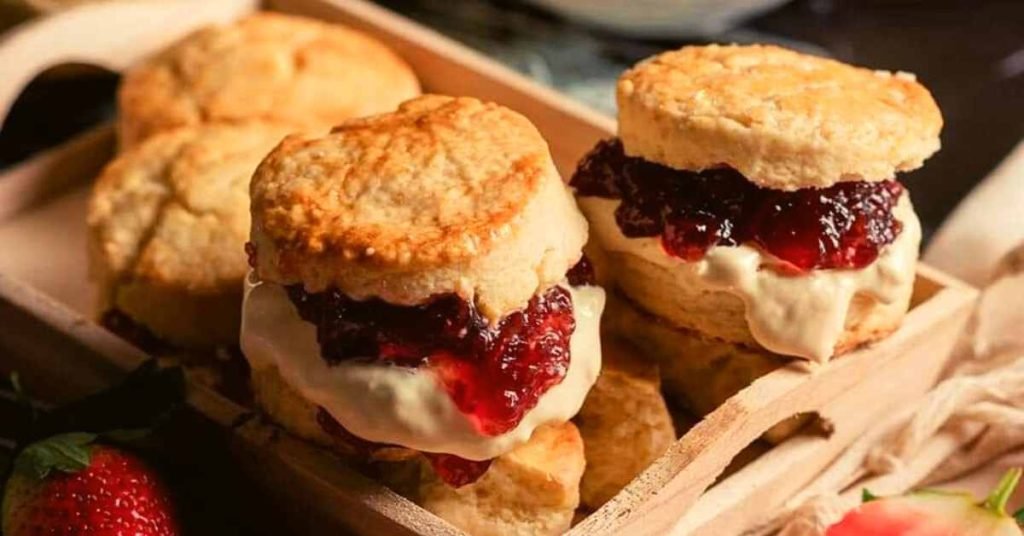
Now, let’s turn our attention to the star of the show – the scone. These delectable, small, round cakes are a crucial component of the afternoon tea experience.
The word “scone” is believed to have originated from the Dutch word “schoonbrot,” meaning beautiful bread. Indeed, these little delights are a thing of beauty for tea enthusiasts worldwide.
Scones come in various flavors, ranging from classic plain and fruit-studded to more adventurous varieties like cheese and even chocolate chip.
The traditional recipe calls for flour, sugar, baking powder, butter, milk, and eggs, creating a perfect balance of flaky and tender texture.
Scone Customs and Etiquette
As much as the English love their tea and scones, they are equally serious about the etiquette surrounding this cherished tradition.
Here are a few customs that add a touch of charm to the experience:
- The Jam Dilemma: One of the great debates in scone etiquette revolves around the order in which to apply jam and clotted cream. In Devon, it is customary to spread the cream first and then add the jam, while in Cornwall, they swear by the opposite – jam first, then cream. Be prepared for friendly banter and regional pride if you find yourself amid a cream tea debate.
- The Perfect Pour: Pouring tea is an art in itself. The milk-first or tea-first dilemma has sparked many a conversation. Traditionalists argue that pouring tea first prevents scalding the delicate bone china, while others believe adding milk first allows for better temperature control. Regardless of the method, the key is to pour with finesse and avoid clattering the spoon against the teacup.
- The Pinky Predicament: While it may be a stereotype, the “pinky up” pose while sipping tea is a no-no. In true British fashion, keep your pinky finger down and maintain a proper grip on the teacup.
Tea Varieties and Blends
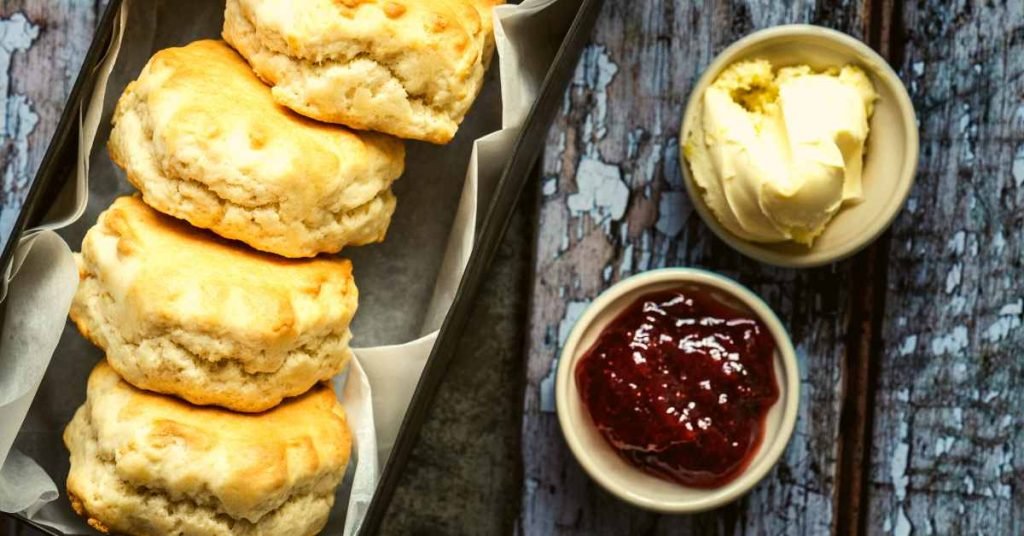
The variety of tea served during afternoon tea is as diverse as the people enjoying it.
From robust black teas like Earl Grey and English Breakfast to delicate Darjeeling and fragrant Jasmine, the choices are endless.
Herbal infusions, such as peppermint or chamomile, also make appearances, catering to all taste preferences.
The art of blending tea has reached new heights in the modern era, with tea connoisseurs experimenting with unique combinations to create signature blends.
Whether you prefer a strong, invigorating cup or a light, floral infusion, there’s a tea blend to suit every palate.
Tea-Time Traditions Beyond England
While England is undoubtedly the epicenter of tea culture, variations of the afternoon tea tradition can be found around the world.
In Japan, the elegant tea ceremony is a cultural institution, emphasizing precision, ritual, and the appreciation of the fleeting beauty of nature.
Meanwhile, in Morocco, the tea-drinking experience is characterized by the preparation and serving of mint tea, a fragrant and refreshing blend enjoyed in lively social settings.
Final Word
In the tapestry of British culture, the threads of English tea and scones are woven with tradition, elegance, and a dash of whimsy.
From the quaint tearooms of the Cotswolds to the grandeur of afternoon tea at The Ritz in London, this beloved ritual continues to enchant locals and visitors alike.
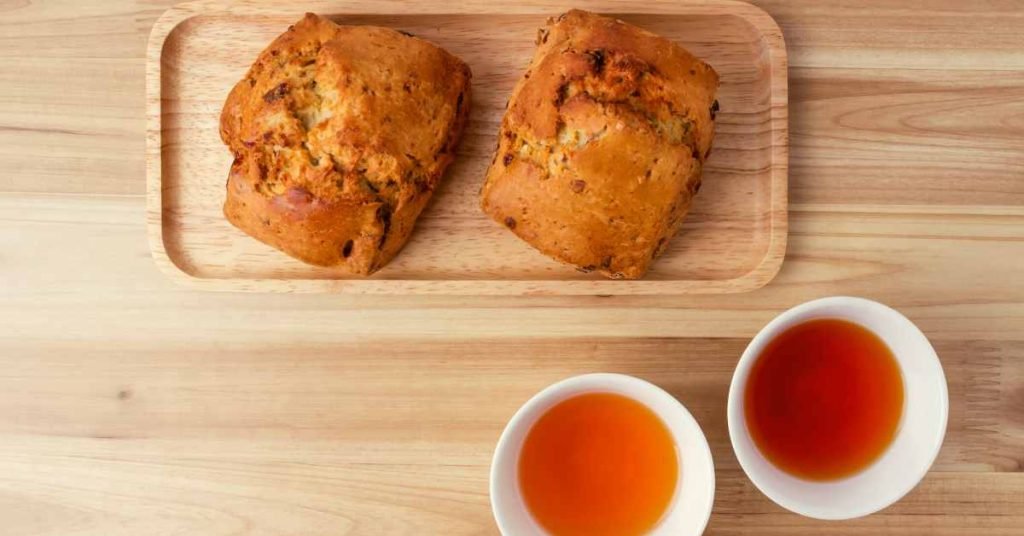
So, the next time you find yourself seated in a cozy corner, cradling a delicate teacup and savoring a warm, buttery scone, remember that you are partaking in a tradition that has withstood the test of time.
It’s not just about the tea; it’s about the camaraderie, the refinement, and the simple joy of taking a moment to indulge in the finer things in life.
As the steam rises from your cup and the clink of teaspoons against porcelain fills the air, you are not just enjoying tea and scones – you are immersing yourself in a cultural experience that is as rich and varied as the blends in your teapot.
MEDICAL DISCLAIMER
Itsnevernotteatime.com cannot and does not contain medical/health advice. The medical/health information is provided for general and educational purposes only and is not a substitute for professional advice.




